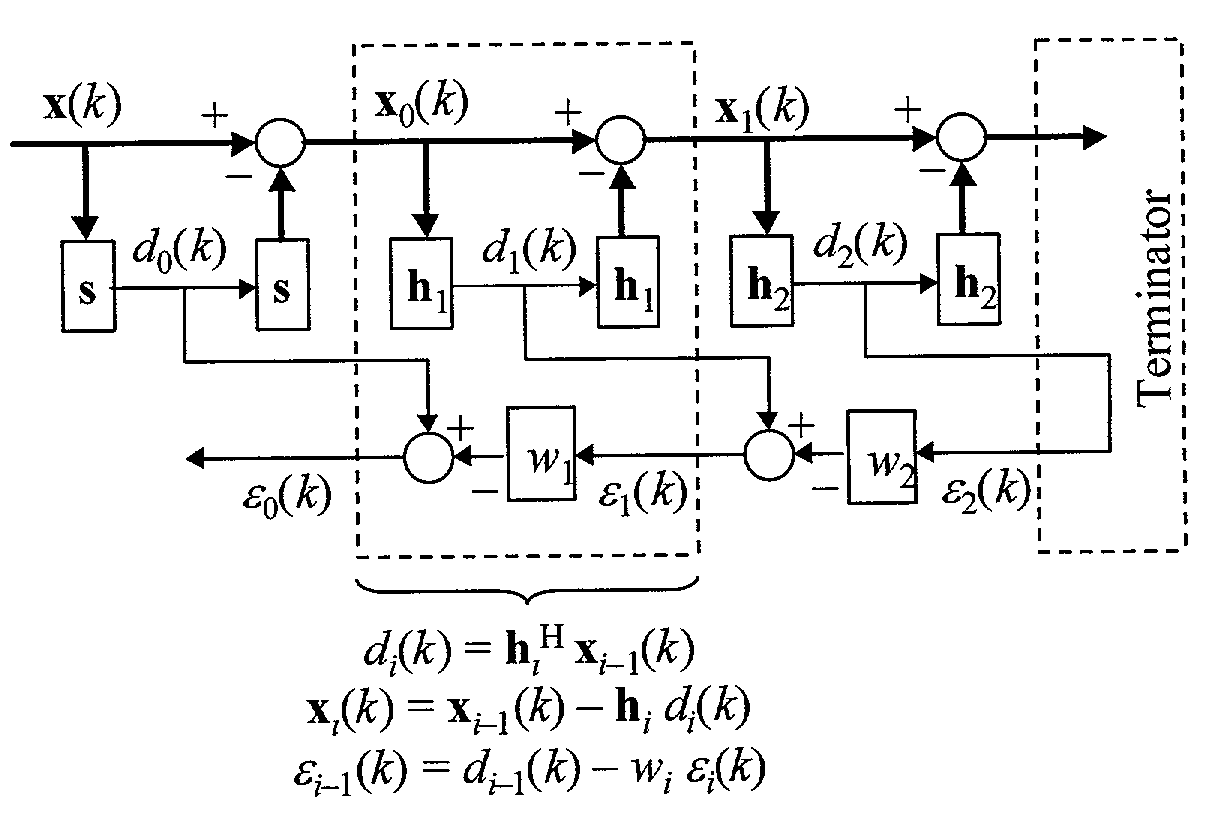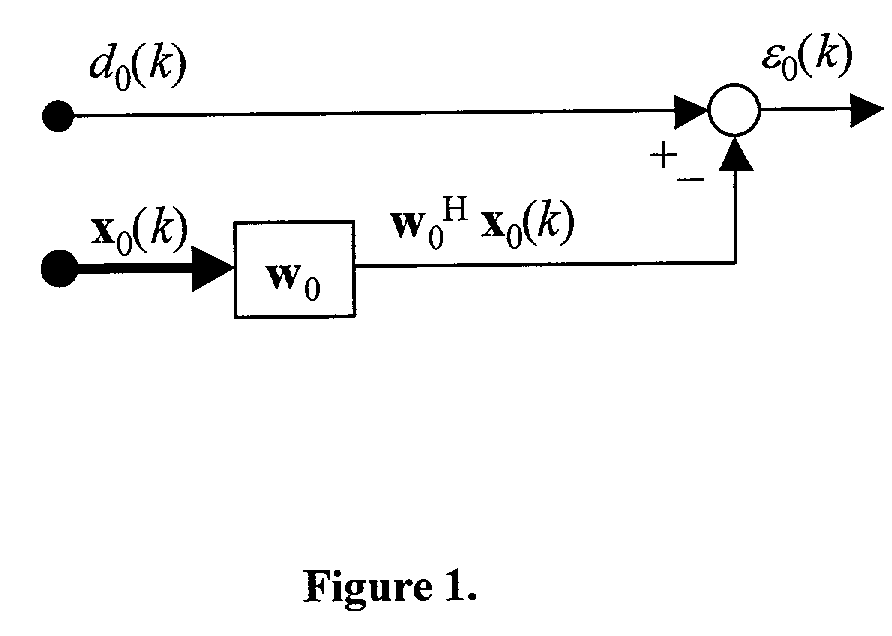System and method for adaptive filtering
a filtering system and adaptive filter technology, applied in the field of methods and systems of processing discrete representations of data sets, can solve the problems of outperforming traditional mvdr solutions and complex observed data, and achieve the effect of less computational resources
- Summary
- Abstract
- Description
- Claims
- Application Information
AI Technical Summary
Benefits of technology
Problems solved by technology
Method used
Image
Examples
Embodiment Construction
Generally
[0046]FIG. 4 schematically illustrates a preferred embodiment of the present invention. The upper chain analyzes the data (flowing from left to right). The lower chain synthesizes the filter weights and the filter output (flowing from right to left).
[0047]In the example using a steering vector s, processing begins with non-adaptive calculations. First, the data vectors are projected onto the steering vector to form an initial estimate of the desired signal
d0(k)=sHx(k). (8)
[0048]For example, d0(k) may be the output of a conventional beamformer or a matched filter. In general, d0(k) contains interference that comes in through the sidelobes of s. To prepare for a statistical analysis that will identify and subtract this interference, the rest of the data may be isolated by writing
x0(k)=Bx(k), (9)
where B is a “blocking matrix” that finds the projection of the data orthogonal to s, i.e., the projection onto the nullspace of s.
[0049]The projection operation in (9) is uniquely d...
PUM
 Login to View More
Login to View More Abstract
Description
Claims
Application Information
 Login to View More
Login to View More - R&D
- Intellectual Property
- Life Sciences
- Materials
- Tech Scout
- Unparalleled Data Quality
- Higher Quality Content
- 60% Fewer Hallucinations
Browse by: Latest US Patents, China's latest patents, Technical Efficacy Thesaurus, Application Domain, Technology Topic, Popular Technical Reports.
© 2025 PatSnap. All rights reserved.Legal|Privacy policy|Modern Slavery Act Transparency Statement|Sitemap|About US| Contact US: help@patsnap.com



